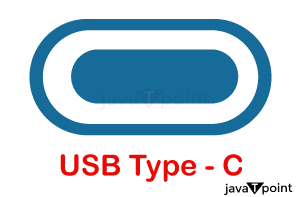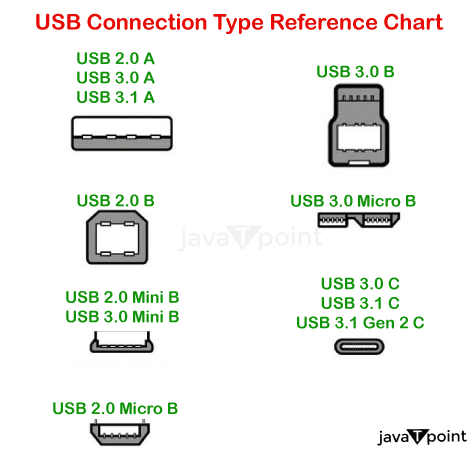USB-C (USB Type C)A single reversible connector called USB-C is intended to replace all other USB kinds on computer and device endpoints in the future. USB-C enables USB devices to be peripherally connected at USB 3.1 power output rates (up to 10Gbps and 20v @ 5A). This capacity allows for the operation of thinner and smaller devices while still providing 100w of power, which is sufficient for most laptops. Many devices' data and power demands will be met by USB-C, which has one of the smallest connection forms. 
With the addition of more pins, Type C maintains electrical compatibility with earlier USB standards while having the increased power capabilities of USB 3.1. For earlier devices (such as USB-A, B and their small and micro equivalents), one just has to utilize a USB-C to USB converter of the relevant kind. With a little amount of circuitry and specific cables, Thunderbolt 3 connections may be established. For the foreseeable future, device connectivity standards are expected to be adopted, which means there will be fewer cable head flips and more interoperable connections. What Is USB Type-C?The new USB cable, also known as USB Type-C, or simply "USB-C," was created to better meet the demands of the contemporary world. Its design included a plethora of enhancements over earlier USB cables (and ports). This is a brief summary of all the new and enhanced features:
Despite the fact that USB-C standards were initially released in 2014, acceptance has been sluggish. It seems that USB-C will soon replace not just the earlier USB standards but also Thunderbolt and DisplayPort. USB-C is strongly interwoven with other emerging standards, such as, USB 4 for higher speeds and USB Power Delivery for enhanced power delivery via USB connections. USB-C Features a Unique Connector DesignThe actual connection for USB Type-C is new and compact; it resembles a micro-USB connector. A number of interesting new USB standards, including USB4 v2.0 and USB power delivery (USB PD), are supported by the USB-C connection itself. 
USB Type-A is the most common standard USB connection that we are all acquainted with. That connection hasn't changed as we've progressed from USB 1 to USB 2 and now USB 3 devices. It plugs in just one way, which is clearly not how we tried to plug it in the first time, and it's as big as ever. However, the enormous USB ports simply could not fit as devices became thinner and smaller. The "micro" and "mini" USB connections, among many other connector shapes, are the result of this. Eventually, this cumbersome assortment of variously shaped connections for variously sized gadgets will come to an end. A new, very tiny connection standard is provided by USB Type-C. Its size is around one-third that of a vintage USB Type-A plug. This is a single standard connection that ought to work with any device. Whether we are charging our smartphone from a USB charger or attaching an external hard drive to our laptop, all we will need is one wire. All of the peripherals we wish to attach to our laptop may be connected with only one tiny connection, which is powerful enough to fit into an incredibly thin mobile device. There is just one USB Type-C connection on the cable itself, located at both ends. USB-C has lots to enjoy. Because it is reversible, we won't need to turn the connection over at least three times to find the right orientation. All devices should have the same form for their USB connection, eliminating the need for us to maintain a multitude of USB cords with different connector shapes for our varied gadgets. Additionally, huge ports that needlessly take up space on ever-thinner gadgets will no longer exist. With "alternate modes," USB Type-C ports may also handle a wide range of protocols. This means that we can have adapters that output VGA, DisplayPort, or other connections from a single USB port. One excellent example of this is the USB-C Digital Multiport adaptor from Apple, which provides an adaptor that enables us to connect a single port to an HDMI, VGA, bigger USB Type-A connection, and smaller USB Type-C connector. It is possible to combine the several USB, HDMI, DisplayPort, VGA, and power ports found on most laptops into a single port type.
Next TopicUser Authentication
|
 For Videos Join Our Youtube Channel: Join Now
For Videos Join Our Youtube Channel: Join Now
Feedback
- Send your Feedback to [email protected]
Help Others, Please Share









